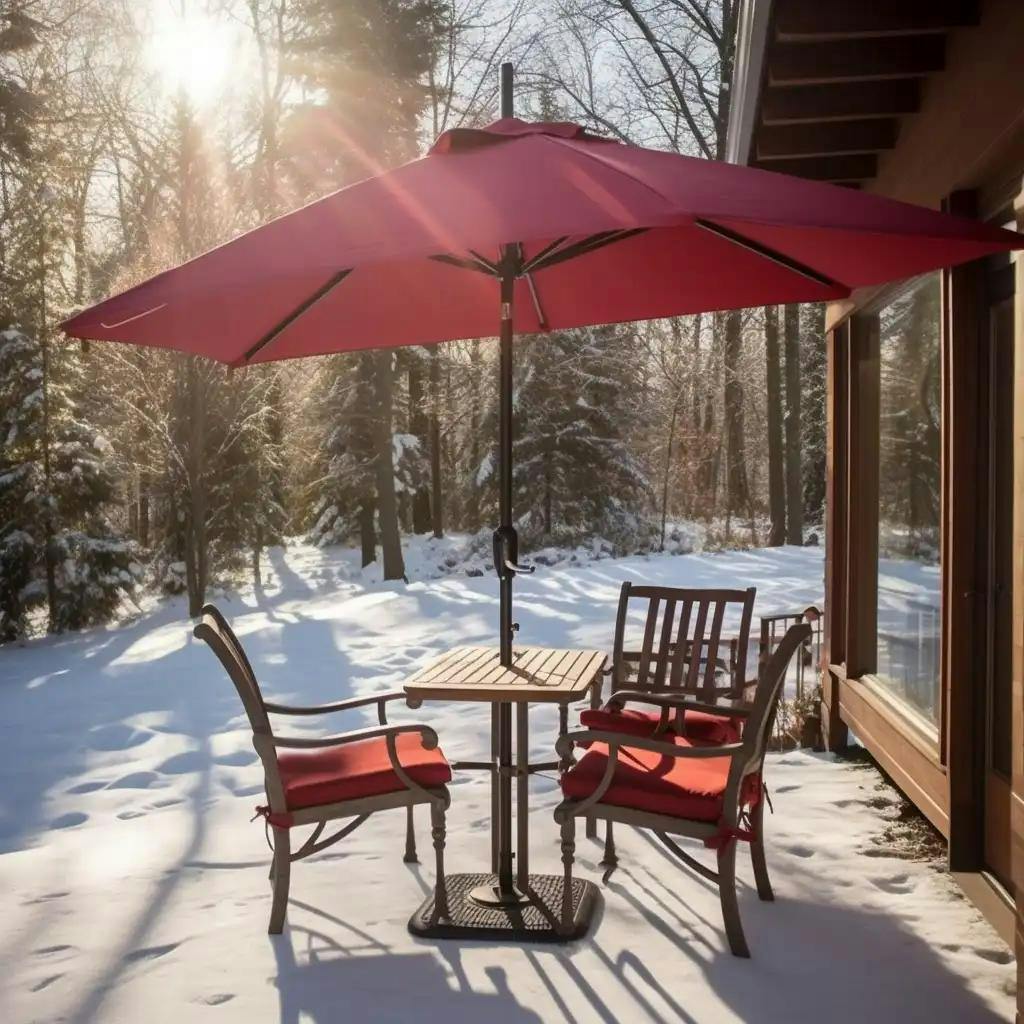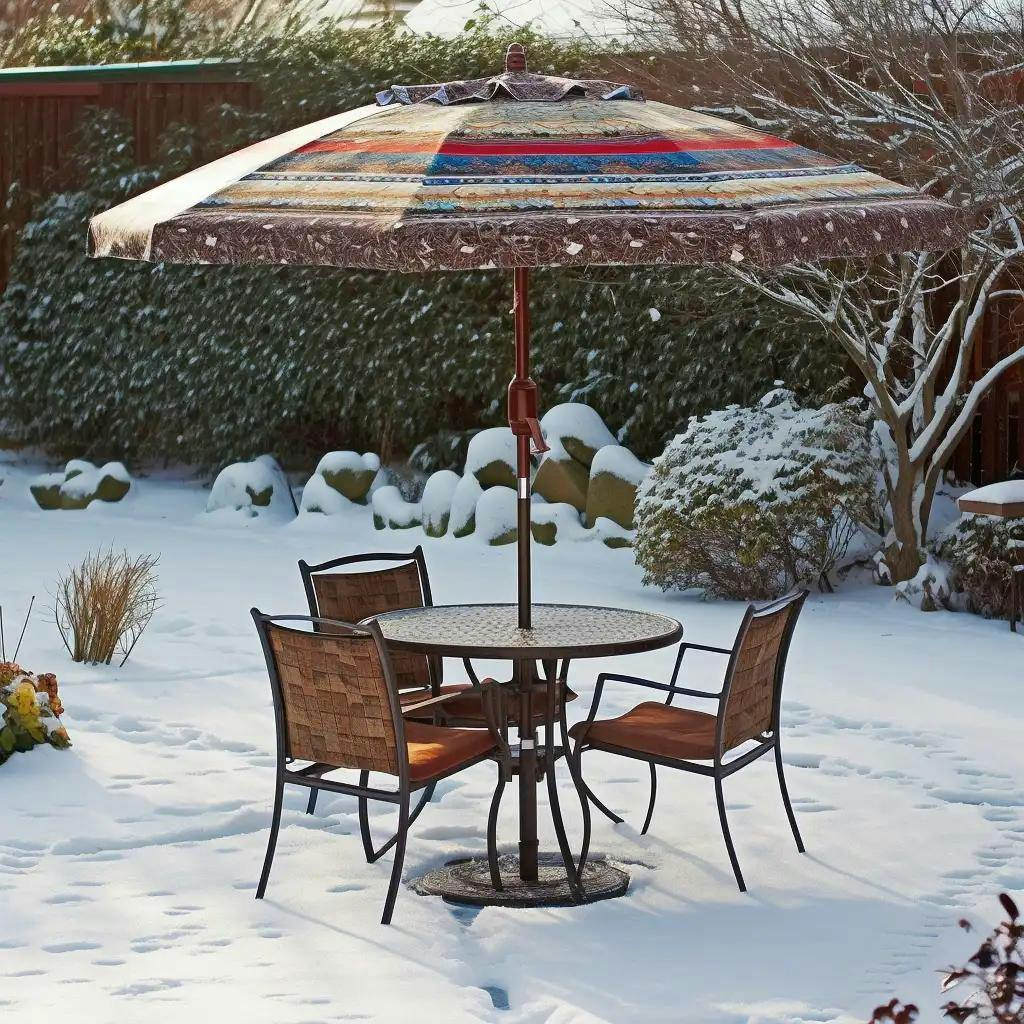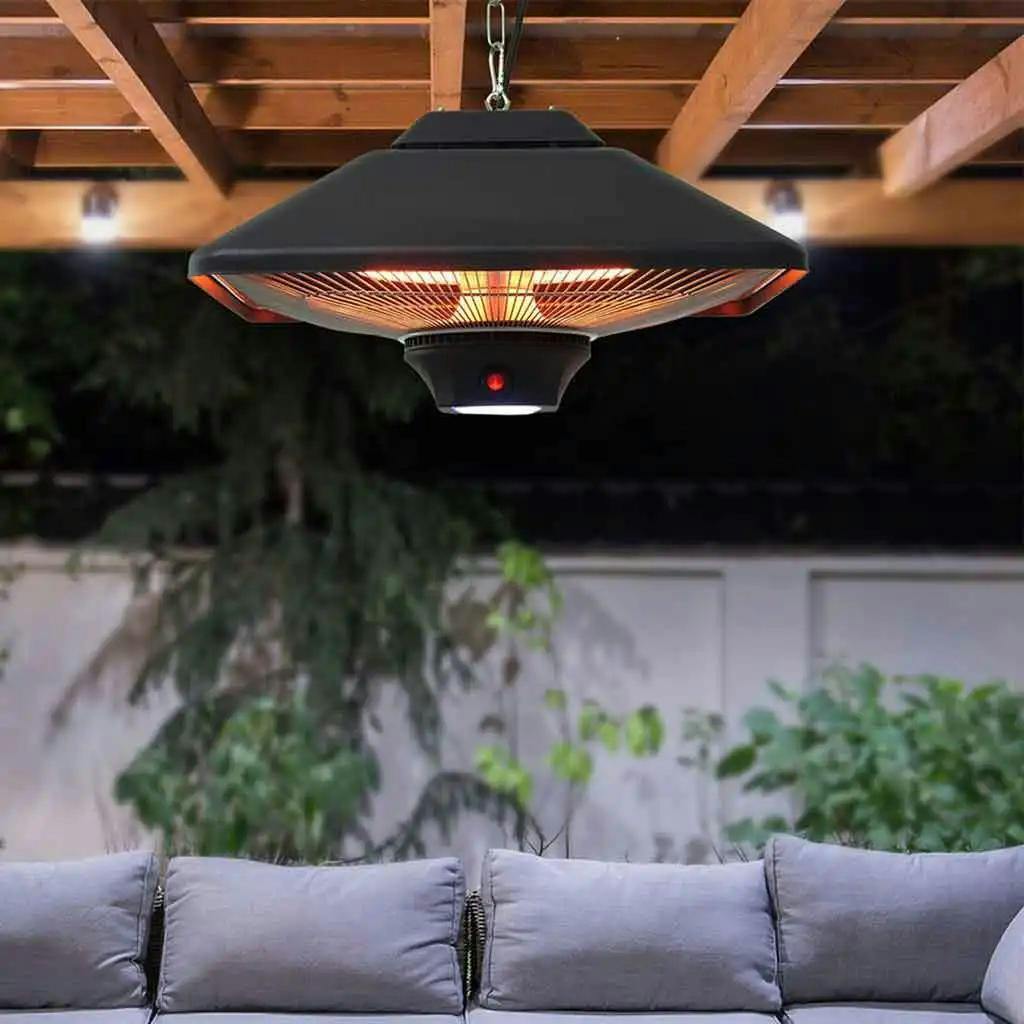As the leaves change color and the temperature drops, it's time to bid farewell to lazy summer afternoons spent lounging under your patio umbrella. But before you pack it away for the winter, it's important to properly store your patio umbrella to ensure its longevity and protect it from the harsh winter elements. In this comprehensive guide, we will explore the key aspects to consider when storing your patio umbrella for the winter, as well as review three products that can help you in this process.
Part 1: Why Patio Umbrella Winter Storage Matters
Winter can be particularly tough on your patio umbrella. The combination of freezing temperatures, snow, and ice can cause damage to the fabric, frame, and overall structure. Without proper storage, you may find yourself with a faded, torn, or even completely unusable umbrella come springtime. By taking the time to store your patio umbrella correctly, you can ensure that it will be in prime condition when it's time to bring it out again.
Key Aspects to Consider for Winter Storage
Before we dive into the product reviews, let's discuss the key aspects to consider when storing your patio umbrella for the winter.
1. Cleaning before storage: Before packing away your patio umbrella, make sure to give it a thorough cleaning. Remove any dirt, leaves, or debris from the fabric and frame. This will prevent the accumulation of moisture and potential mold growth during storage.
2. Dry storage: It's crucial to store your patio umbrella in a dry location. Moisture can cause mildew and rust, so avoid storing it in damp basements or garages. Instead, opt for a dry storage area such as a shed or a closet indoors.
3. Utilizing the right protection products: Investing in high-quality patio umbrella covers and other protective products can make a significant difference in preserving your umbrella during the winter months. Let's explore some of these products in detail.

Part 2: Understanding Different Types of Patio Umbrella Covers
When it comes to patio umbrella covers, there are a variety of options available on the market. Let's take a closer look at the different types of covers and the pros and cons of each.
Vinyl covers: Vinyl covers are a popular choice due to their durability and ability to withstand extreme temperatures. They are resistant to water, UV rays, and tearing, making them ideal for protecting your patio umbrella during the winter months. However, vinyl covers can be prone to cracking over time and may not provide as snug of a fit as other material.
Polyester covers: Polyester covers are another common choice for patio umbrella protection. They are lightweight, easy to clean, and resistant to mold and mildew. Additionally, polyester covers often come with a water-resistant coating, providing an extra layer of protection against moisture. However, they may not be as durable as vinyl covers and can fade over time with prolonged exposure to sunlight.
Nylon covers: Nylon covers are known for their strength and durability. They are resistant to tearing and can withstand harsh weather conditions. Nylon covers also tend to be lightweight and easy to clean. However, they may not be as water-resistant as vinyl or polyester covers.

Part 3: The Role of Waterproof Patio Furniture Covers in Winter Storage
While patio umbrella covers provide essential protection, waterproof patio furniture covers can offer an additional layer of defense against the winter elements. These covers are designed to fit over your entire patio furniture set, including the umbrella, providing comprehensive protection.
Waterproof patio furniture covers are typically made from durable materials such as polyester or vinyl, which are resistant to water, UV rays, mold, and mildew. They offer full coverage, protecting your furniture from rain, snow, and other outdoor debris. Additionally, these covers often feature adjustable straps or elastic hems, ensuring a secure fit.
When selecting a waterproof patio furniture cover, consider the size and dimensions of your patio set. Look for covers that are designed specifically for your furniture type to ensure the best fit and protection. Investing in a high-quality waterproof cover can help prolong the lifespan of your patio umbrella and furniture, saving you money in the long run.
Part 4: Patio Umbrellas: To Dismantle or Not to Dismantle
One common question when it comes to patio umbrella winter storage is whether to dismantle the umbrella or keep it intact. Let's explore the pros and cons of each approach.
Dismantling the umbrella: Dismantling the umbrella involves removing the canopy and disassembling the frame. This approach allows for easier storage and reduces the risk of damage to the fabric and frame during winter. However, dismantling the umbrella can be time-consuming and may require additional storage space for the disassembled parts.
Keeping the umbrella intact: Keeping the umbrella intact involves leaving the canopy and frame assembled during storage. This approach is more convenient and requires less effort. However, it increases the risk of damage to the fabric and frame, especially if the umbrella is not properly protected with a cover.
Ultimately, the decision to dismantle or keep the umbrella intact depends on your personal preference and available storage space. If you have the time and storage capacity, dismantling the umbrella can provide added protection. However, if convenience is a priority, keeping the umbrella intact with a reliable cover can still offer sufficient protection during winter.
Part 5: Offsetting the Odds: Offset Umbrellas in Winter
Offset umbrellas, also known as cantilever umbrellas, require special attention when it comes to winter storage. Due to their unique design, they can be more susceptible to damage from snow, ice, and strong winds. Here are a few steps to properly store your offset umbrella for the winter:
Close and secure the umbrella: Begin by closing the umbrella and ensuring that it is securely locked in place. This will prevent any accidental opening or damage during storage.
Remove the canopy: Detach the canopy from the umbrella frame. This will prevent any accumulation of snow or ice on the fabric, which can lead to tearing or stretching.
Clean and dry the canopy: Thoroughly clean the canopy to remove any dirt or debris. Allow it to dry completely before storing to prevent mold or mildew growth.
Disassemble the frame: Carefully disassemble the umbrella frame, paying attention to any removable parts. Clean and dry each component before storage.
Store in a dry location: Find a dry storage area, such as a shed or garage, to store the umbrella components. Avoid storing them on the ground or in damp areas that can lead to moisture damage.
By following these steps, you can ensure the longevity of your offset umbrella and enjoy its shade and protection for many seasons to come.
Part 6: Securing your Patio Umbrella: Importance of Umbrella Base Weights
Even when in storage, it's important to secure your patio umbrella to prevent it from tipping over or being damaged by strong winds. Umbrella base weights provide stability and help keep your umbrella in place during winter storage. Let's explore the importance of umbrella base weights and the different types available.
Why secure your umbrella even in storage: Securely anchoring your patio umbrella during winter storage is essential to prevent any accidental damage. Strong winds can cause the umbrella to tip over, leading to potential fabric tears, frame damage, or even injury. By using umbrella base weights, you can ensure that your umbrella remains stable and protected.
Types of Base Weights: There are various types of base weights available in the market. Some common options include:
Sand-filled base weights: These weights are designed to be filled with sand and offer a cost-effective solution for securing your patio umbrella. However, they may require frequent refilling and can be messy to handle.
Water-filled base weights: Water-filled base weights are convenient to use and can be easily filled and emptied when needed. They are typically made from durable plastic or rubber materials. However, they may not be as stable as other types of weights and can freeze during colder temperatures.
Base plate weights: Base plate weights are heavy metal plates that can be attached to the base of your patio umbrella. They provide excellent stability and are resistant to harsh weather conditions. However, they can be more expensive and require additional hardware for installation.
Part 7: Utilizing Umbrella Cloth Bags for Extra Protection
In addition to using patio umbrella covers, utilizing an umbrella cloth bag can provide an extra layer of protection during winter storage. Cloth bags are designed to fit over your folded patio umbrella, offering protection against dust, dirt, and scratches. They are typically made from durable and breathable materials, allowing air circulation to prevent moisture buildup.
When selecting an umbrella cloth bag, look for one that is the appropriate size for your patio umbrella. It should have a drawstring or zipper closure to ensure a snug fit. Additionally, consider the material and construction of the bag to ensure it is durable and resistant to tearing.
Umbrella cloth bags are a cost-effective solution for protecting your patio umbrella during winter storage. They are easy to use and can be stored alongside your umbrella cover when not in use.
Part 8: Final Checklist Before Patio Umbrella Winter Storage
Before you bid adieu to your patio umbrella for the winter, here's a final checklist to ensure you've covered all the necessary steps:
- Clean the umbrella thoroughly, removing any dirt, leaves, or debris.
- Allow the umbrella to dry completely before storage to prevent mold or mildew growth.
- Consider dismantling the umbrella for added protection or choose to keep it intact with a reliable cover.
- Invest in a high-quality patio umbrella cover and consider using a waterproof patio furniture cover for comprehensive protection.
- Secure the umbrella with base weights to prevent tipping or damage from strong winds.
- Utilize an umbrella cloth bag for extra protection against dust, dirt, and scratches.
- Store your umbrella in a dry location, such as a shed or closet, to prevent moisture damage.
By following this checklist, you can ensure that your patio umbrella will be in prime condition when it's time to enjoy outdoor living again.
Conclusion
As the winter chill sets in, it's important to properly store your patio umbrella to protect it from the harsh elements. By cleaning it thoroughly, choosing the right cover, and utilizing umbrella base weights, you can ensure that your umbrella will be in excellent condition when the warmer seasons return.
Remember, proper winter storage is crucial for extending the lifespan of your patio umbrella and ensuring that it remains in optimal condition. With the right care and protection, you can enjoy many more seasons of shade and relaxation under your trusty patio umbrella.
FAQs
Should I dismantle my patio umbrella for winter storage?
Dismantling your patio umbrella can provide added protection during winter storage, especially if you have the time and storage space. However, if convenience is a priority, keeping the umbrella intact with a reliable cover can still offer sufficient protection.
Can I use a regular cover for my offset umbrella?
While a regular cover can provide some protection for your offset umbrella, it may not offer the same level of coverage and stability as a cover specifically designed for offset umbrellas. It's best to invest in a cover that is specifically made for offset umbrellas to ensure optimal protection.
Can I use sand instead of water to fill my base weights?
Yes, you can use sand instead of water to fill your base weights. Sand-filled base weights are a cost-effective solution for securing your patio umbrella. However, keep in mind that sand-filled weights may require frequent refilling and can be messy to handle.
How do I clean my patio umbrella before winter storage?
To clean your patio umbrella before winter storage, start by removing any dirt, leaves, or debris from the fabric and frame. Use a gentle soap or mild detergent mixed with water to scrub away any stains or grime. Rinse thoroughly and allow the umbrella to dry completely before storing.
Can I store my patio umbrella in a damp area like a basement or garage?
It's best to avoid storing your patio umbrella in a damp area like a basement or garage. Moisture can cause mold, mildew, and rust, which can damage the fabric and frame of your umbrella. Instead, opt for a dry storage area such as a shed or a closet indoors.
About Marianne Williamson
Marianne Williamson, a Texan, finds BBQ a mindful journey of connection. The grill isn't just about cooking—it's a way to relish the moment and create memories. With the sun's warmth and the sizzle, grilling becomes an exploration, from marinades to searing. Join her in celebrating life's flavors and joys around the grill.

![Master the Art of Lighting Patio Heaters Manually [2023 Guide]](/_next/image?url=https%3A%2F%2Fcdn.sanity.io%2Fimages%2F8ngmz6db%2Fproduction%2F74752d01c9dddeee7530856cb05237f6169be0c9-1024x1024.webp%3Fw%3D1024%26auto%3Dformat&w=3840&q=75)

